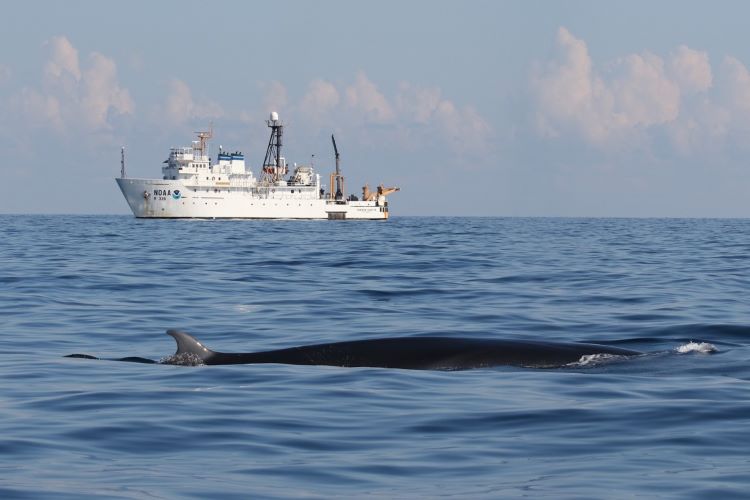Rice’s whales, found in the Gulf of Mexico, are non-migratory baleen whales; a sleek and beautiful tropical species. Externally, the whales are about 40 feet long and can weigh up to 60,000 pounds. Their grey bodies have three ridges in front of their blowhole and a hooked dorsal fin about three fourths of the way down their backs. Their pectoral fins are narrow and are located about half of the way down their torso, their tails large and smooth.
Though they are now recognizable, Rice’s whales were not always Rice’s whales. Until 2021 they were categorized with the Bryde’s whale species. Bryde’s whales in the Atlantic are found from Cape Hatteras all the way to the Caribbean and Gulf of Mexico. There are not many external visual cues that signify the differences between Bryde’s and Rice’s whales; so it is no surprise that it has taken so long to classify them as individuals. Starting with genetic research, solidified into representational data in 2014, conclusions were drawn that showed genuine contrasts in the DNA of the two species. Upon examining the mitochondrial DNA from samples of Rice’s whales, it was discovered that within the first 375 base pairs, 25 variations were found to contrast the mitochondrial DNA of Bryde’s whales. This data proved the existence of Rice’s whale, but no full physical representation of the species was able to be studied and thus the discovery of the new whale was not yet complete. In 2019 one of Rice’s whales was stranded in the west Florida everglades and for the first time the full specimen and its skeletal structure were able to be examined. The skull turned out to be the most prominent differential feature for the species. Measurements of ten aspects of the whale’s skull were taken and compared to other Bryde’s-like samples to confirm the species as separate. In 2021, the species was determined and represented in writing through a publication on the morphological and genetic singularity of Rice’s whale.

Credit: NOAA Fisheries/Laura Dias (Permit #21938)
Since its debut as a species, features of Rice’s whales’ lives are being studied, such as their diets, behaviors, and perhaps most importantly, their abundance. The population size, originally believed to be about 100 individuals; has decreased significantly to an estimated 50-60 individuals. This is more than enough to classify the species as endangered. Several factors threaten Rice’s whales’ survival. Some anthropogenic hazards include, entanglement and vessel strikes, oil and plastic pollution, and ocean noise. The population also faces low genetic diversity causing it to be ill prepared for adapting to changes in the environment. Efforts to conserve the species are in progress including addressing ocean noise, creating protected habitat and aligning policy so the amazing species that is Rice’s whales can live safer lives.

